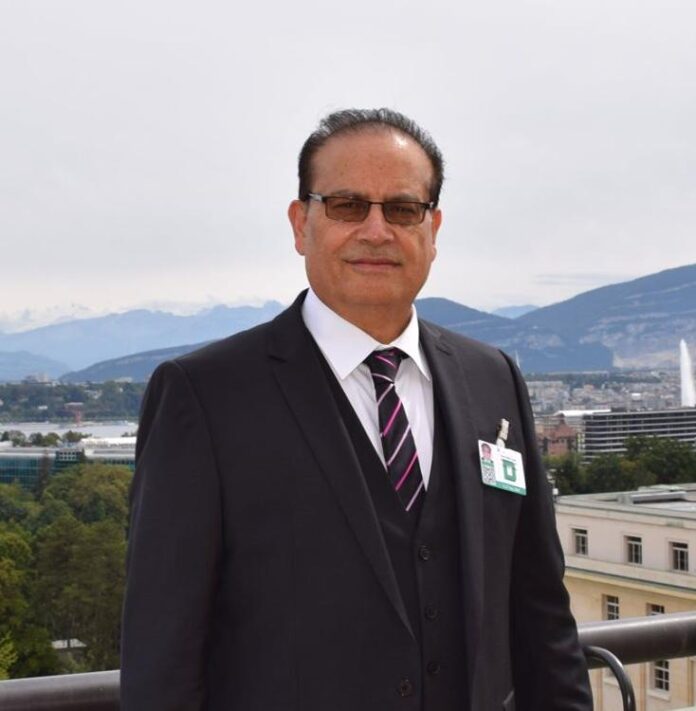Qamar Bashir
The recent Supreme Court judgment represents an unprecedented act of defiance against the previously unquestioned power of the establishment, directly challenging all pillars of the state, including the government, parliament, Election Commission, the President and even factions within the judiciary.
This situation echoes the Supreme Court’s earlier verdict to hold Punjab Assembly elections on May 14, 2023, which was not implemented due to intense pressure from various state elements. The judiciary’s inability to enforce its decision back then led to the marginalization of PTI, alleged rigged elections, the formation of an unrepresentative government, and a deepening constitutional crisis, causing immense hardship for the people and undermining the rule of law.
Now, all elements of power within the state are fully determined to maintain the status quo and are fully poised to use every means at their disposal to undermine the purpose, intent, and implementation of the Supreme Court’s decision. The earlier capitulation of the Supreme Court occurred in an environment where the judiciary was shackled and lacked the strength to counter the combined assault from all pillars of the state and their affiliated institutions. However, it appears that the judiciary has now regained the strength it lost long ago. The subordinate judiciary, high courts, and even the Supreme Court, which had been reduced to mere rubber stamps, seem to have reached a point where they have decided to reclaim their rightful authority, a domain they had surrendered since Pakistan’s inception, due to the intense pressures exerted by powerful elements.
However, the implementation of the Supreme Court judgment is not going to be as simple and direct as it should be. The vested interests will likely create as much noise and chaos as possible to protect their deeply entrenched interests. Implementing the judgment would mean catapulting the entire current ecosystem. It would mean reversing all illegal actions taken by the Election Commission, annulling the Election Commission Rules that were declared extra-constitutional, and voiding all changes made to the Election Act 2023 that had a retrospective effect.
It would also involve restoring PTI as a fully functional political party in parliament, ensuring the independent functioning of election tribunals, and appointing serving judges to preside over these tribunals. This would result in the restoration of all seats that PTI had lost due to the manipulation of Form 47, allowing PTI to gain a majority in both the Punjab Assembly and the National Assembly.
Consequently, a vote of no-confidence would be initiated against the current Prime Minister, leading to the election of a new Prime Minister whose first action would be to withdraw all cases against the PTI chairman and activists. Following this, the next steps for parliament and the assemblies would be to impeach the President and remove him from power.
While this outcome seems a logical consequence of the judgment, it poses a severe threat to the coalition political parties, the government, the Election Commission, the Prime Minister, the President, and all those with vested interests in maintaining the current system. In this high-stakes scenario, these elements are likely to employ a multifaceted approach to obstruct the implementation of the judgment.
They may attempt to pass new laws or amend existing ones to dilute or circumvent the Supreme Court’s decision, introducing legal ambiguities that alter the jurisdiction or functioning of the judiciary, rendering the judgment ineffective. The Election Commission or law enforcement agencies might deliberately delay the process by citing technical, administrative, or procedural hurdles to buy time, hoping that public and political momentum behind the judgment will diminish.
Additionally, multiple review petitions or appeals may be filed to stall the implementation, dragging the matter through lengthy legal battles to delay any practical execution. The establishment and government could use state-controlled media, and sympathetic private outlets, to launch a disinformation campaign against the judgment, portraying it as biased or contrary to national interests, thereby swaying public opinion and reducing pressure for compliance.
Efforts may also be made to intimidate judges through threats, blackmail, or exposure of alleged misconduct to weaken their resolve, hoping to force a compromise or soften the judgment. Backdoor negotiations with political parties, including PTI, might be pursued to reach a deal that either delays or waters down the implementation by offering incentives or compromise solutions.
The forces defending the status quo may incite street protests, strikes, or civil unrest to create chaos and instability, justifying non-implementation under the guise of maintaining law and order. They might mobilize all elements of power to resist the judgment by refusing to cooperate, creating operational hurdles, or even actively subverting the judiciary’s authority. The government might frame the situation as an extraordinary crisis requiring exceptional measures, sidelining the Supreme Court’s decision under the pretext of national interest or stability.
Finally, intensified legal actions, arrests, and harassment against PTI leadership and supporters could be employed to weaken their organizational strength and create leadership vacuums, diminishing their ability to capitalize on the judgment. Those with vested interests might unite to form a grand alliance, coordinating efforts to resist the judgment and leveraging their collective resources and influence to maintain the status quo.
However, this time, the Supreme Court seems determined to dig in its heels and use whatever constitutional power it has to ensure the implementation of its judgment. In the event of non-compliance, the Court can issue comprehensive, binding implementation orders that clearly define the roles and responsibilities of various state institutions, eliminating any ambiguity or delay and making non-compliance easily identifiable. It may also establish a monitoring committee to oversee the implementation process.
The Supreme Court could initiate contempt proceedings against any individual or institution that defies its orders, taking swift action against high-ranking officials who deliberately obstruct the implementation process to demonstrate the judiciary’s resolve. It may issue direct orders to the executive branch to enforce its judgment, and if these agencies are hesitant or unwilling to act, the Court can take decisive action against their leadership for dereliction of duty. In extreme cases, it may invoke Article 245 of the Constitution, which permits calling upon the military to aid civil power in implementing its orders.
The Court might actively engage with the public through media outreach, making the details and significance of the judgment widely known. By mobilizing civil society organizations, legal experts, and bar associations to rally public support, it can create an environment that pressures the government and establishment to implement the decision.
It may direct the Election Commission to strictly adhere to timelines for re-elections, reinstating PTI members, and reversing any unconstitutional changes to election laws. Additionally, the Supreme Court could regularly publish the names and details of individuals or institutions obstructing the implementation process, serving as a powerful tool to compel compliance and uphold the rule of law.
Non-implementation of the Supreme Court’s judgment would have dire consequences for the country and its people. It would undermine the rule of law, erode judicial independence, and set a dangerous precedent that powerful institutions can defy legal authority without consequences. This would weaken democratic processes, leading to political instability, civil unrest, and a breakdown of constitutional order. For the people, it would mean the erosion of their rights, loss of faith in the justice system, and diminished prospects for fair representation and governance. It would also damage Pakistan’s international reputation, deter foreign investment, and potentially invite undemocratic forces to exploit the chaos, plunging the nation into deeper economic and social turmoil. Therefore, implementing the judgment is crucial to safeguard democracy, maintain stability, and protect the rights and future of the citizens.
Qamar Bashir
Former Press Secretary to the President
Former Press Minister to the Embassy of Pakistan to France
Former MD, SRBC, CEO, ATV

















